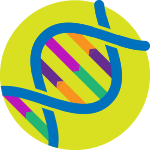Flipping Experiment
Years ago, scientists created special goggles that flipped views upside down. Volunteers wore these goggles whenever they were awake.
At first, they were confused and dizzy because they saw everything upside-down. But after several days, something amazing happened. Even with the goggles, they started seeing things right-side-up. Their brains changed their mind's view!
Then the volunteers removed the glasses, but their brains had become used to the new view. Now they saw an upside-down world, even without the goggles. After just a few days, their brains once more adjusted and produced a right-side-up image.




 Biodiversity
Biodiversity
 Brain
Brain
 Genetics
Genetics
 Marine BiOLogy
Marine BiOLogy
 MicrobiOLogy
MicrobiOLogy
 PaleontOLogy
PaleontOLogy
 ZoOLogy
ZoOLogy
 AnthropOLogy
AnthropOLogy
 ArchaeOLogy
ArchaeOLogy
 Astronomy
Astronomy
 Climate Change
Climate Change
 Earth
Earth
 Physics
Physics
 Water
Water
